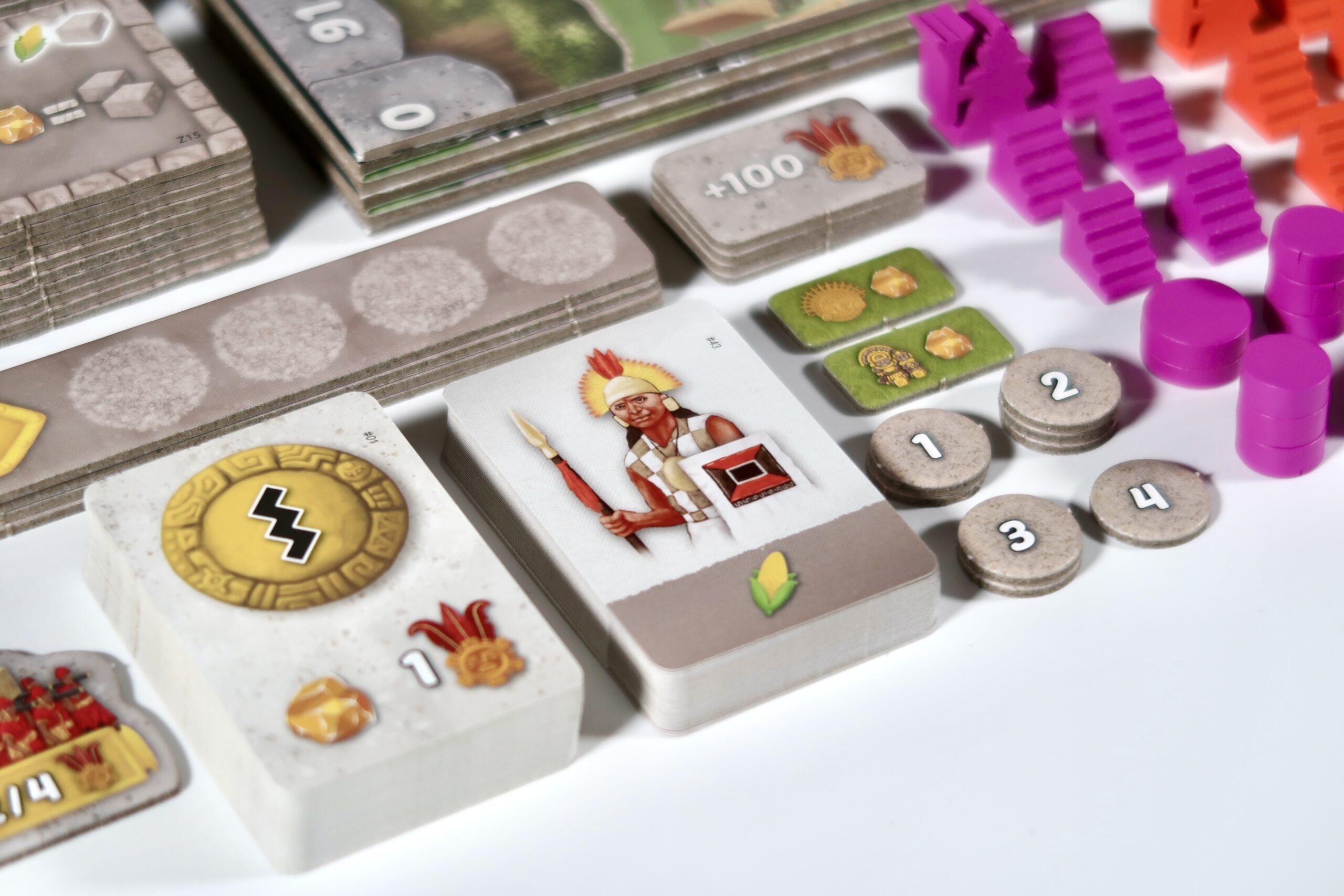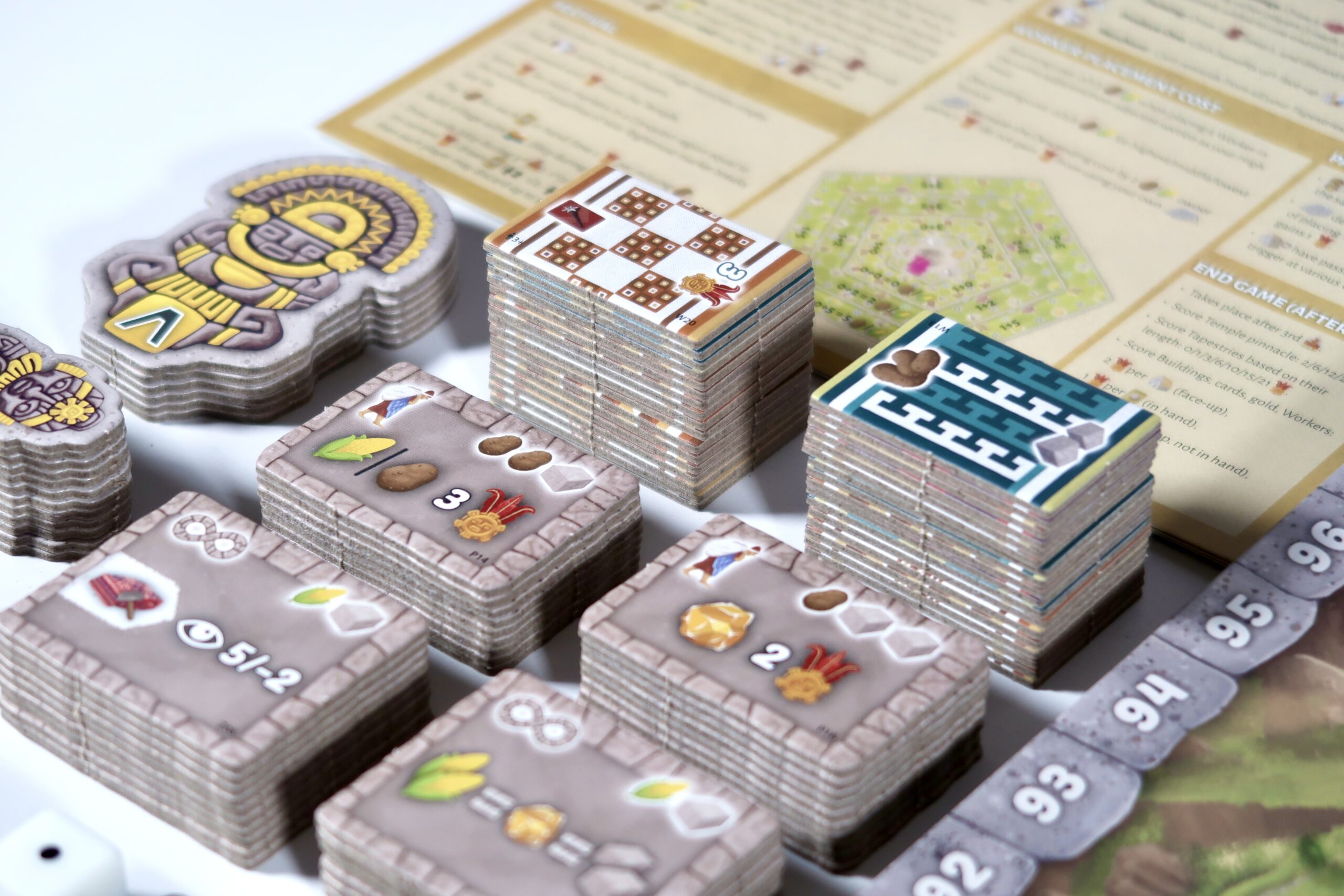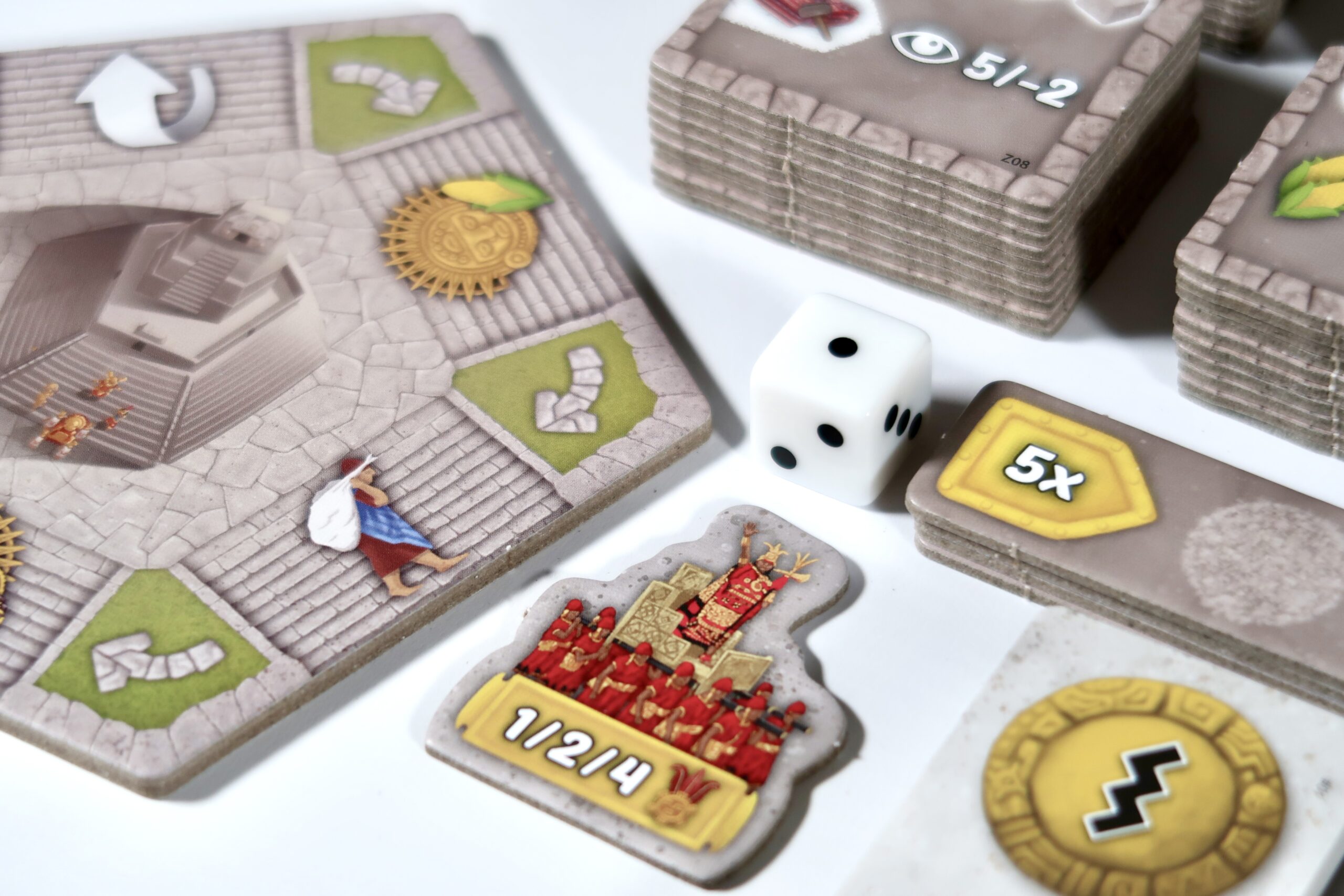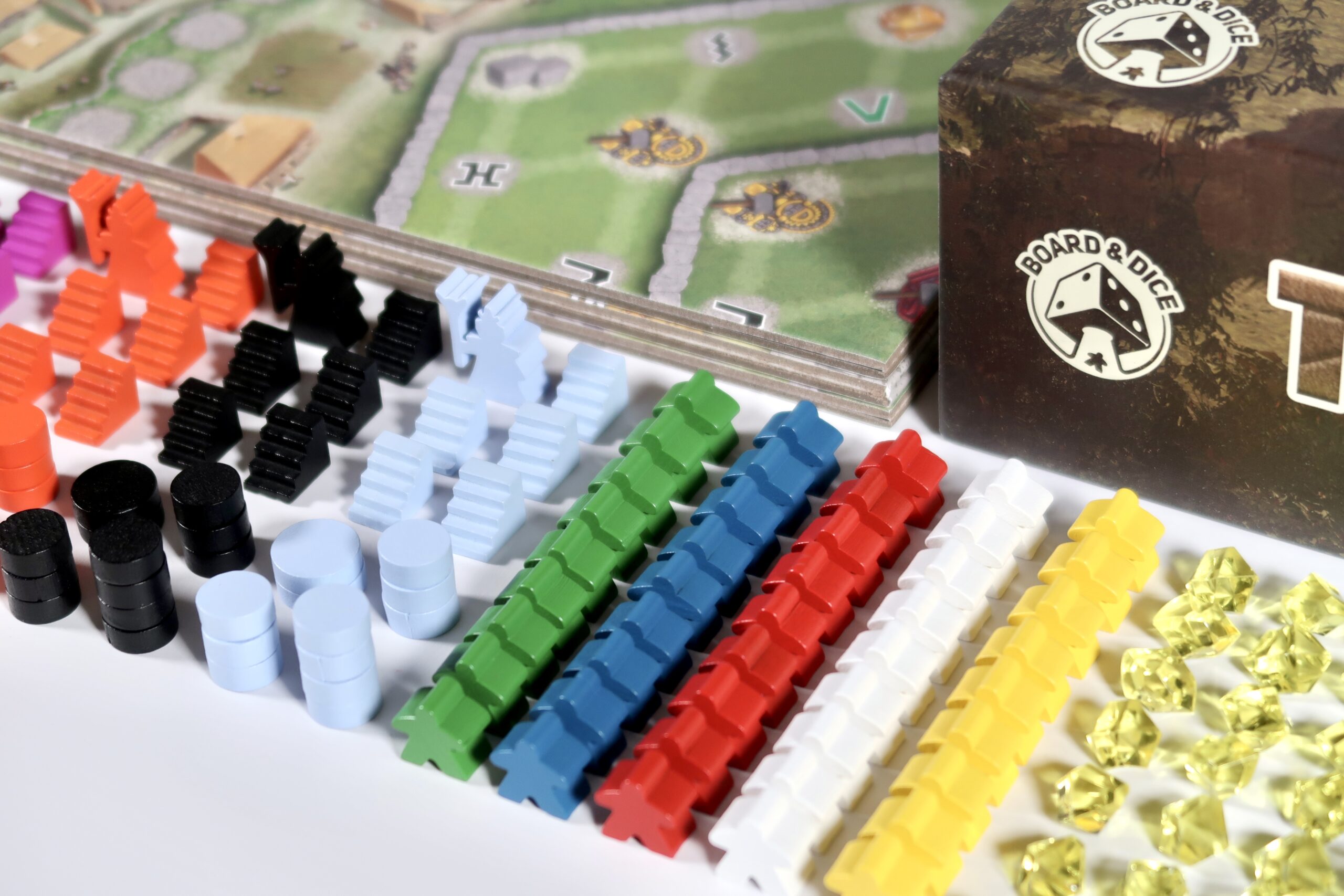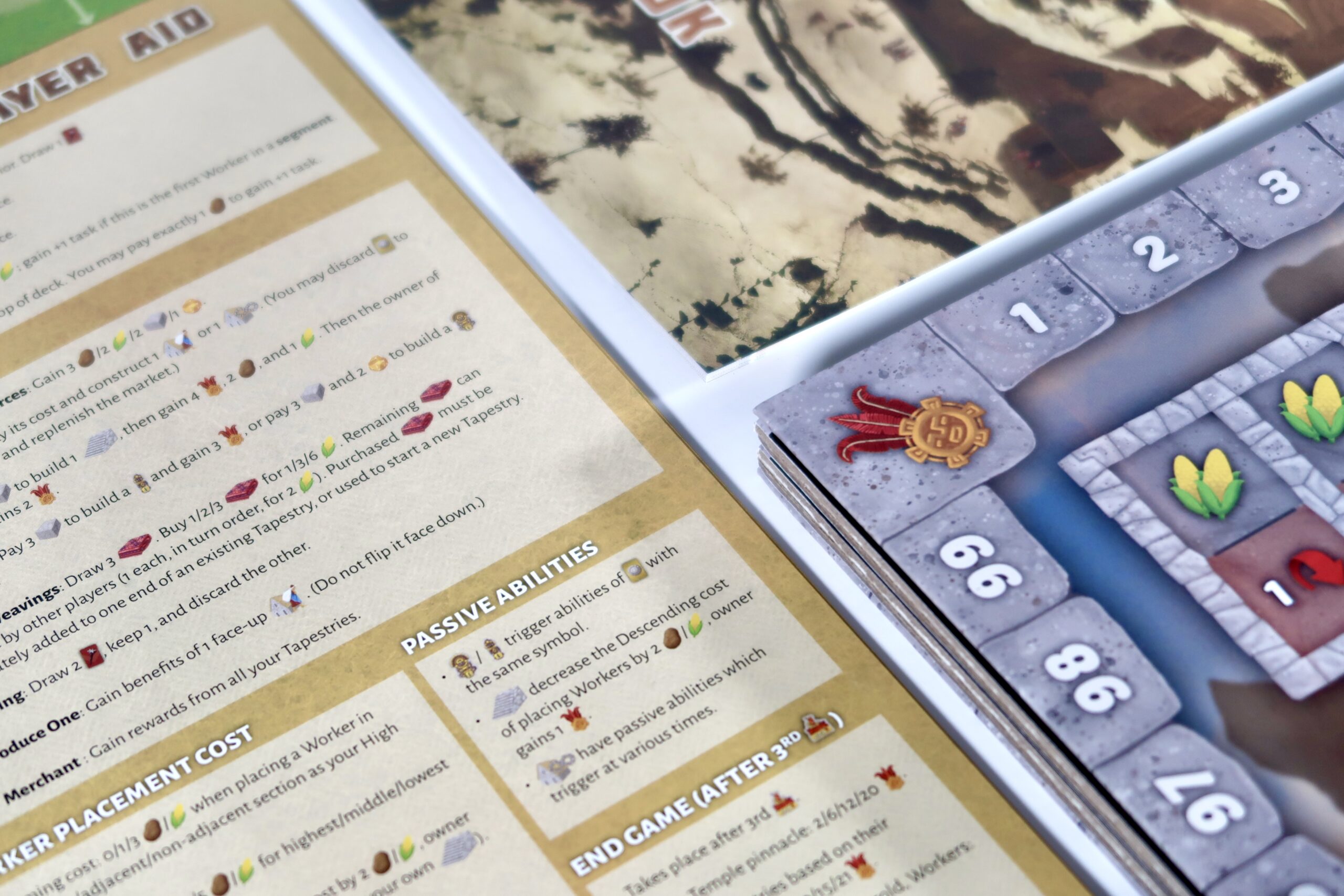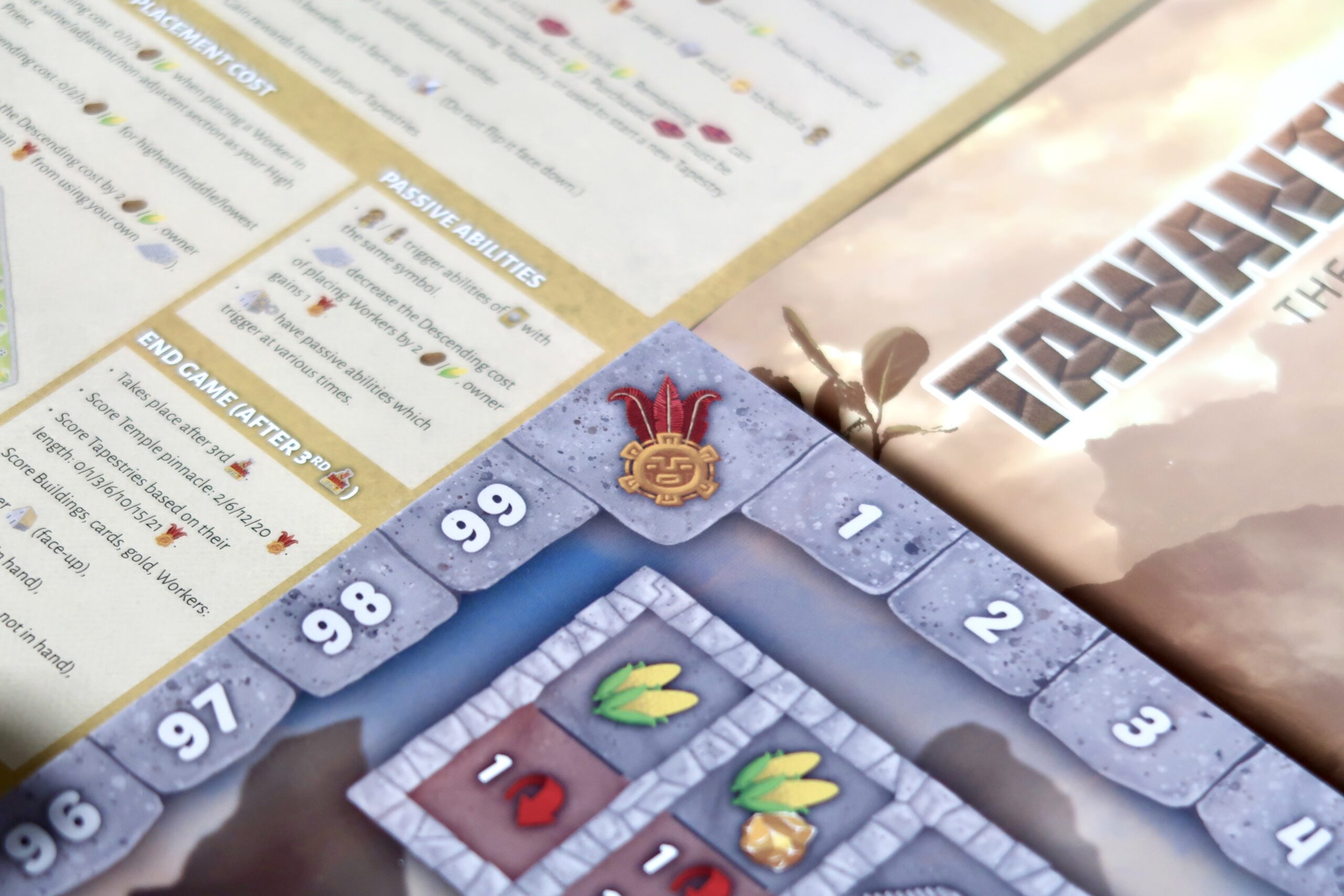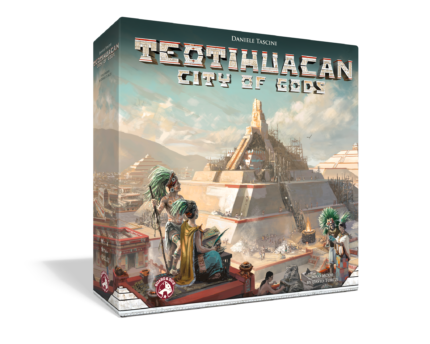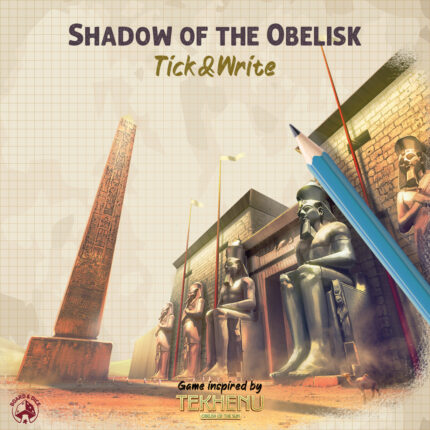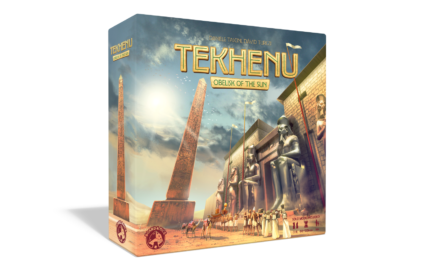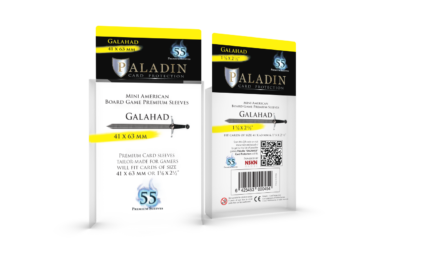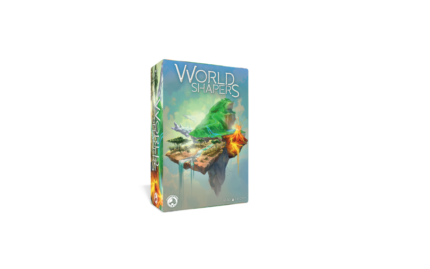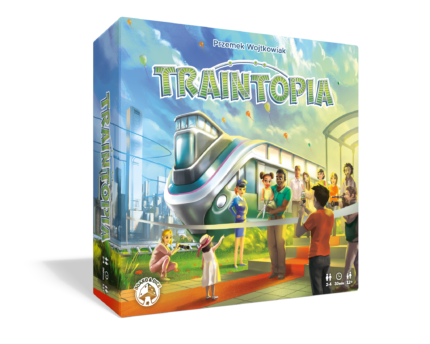Basic information
Type: strategy, action points, card drafting, dice management
Players: 1-4
Playtime: 60-120 mins
Age: 14+
Designers: Dávid Turczi
Artists: Jakub Fajtanowski, Jakub Skop, Zbigniew Umgelter
Under the wise leadership of Pachacuti, the Inca Empire rises to unprecedented heights. The Sapa Inca commands his people to expand their empire far beyond the mountains, across the four regions known as Chinchaysuyu, Antisuyu, Qullasuyu, and Kuntisuyu. As one of Pachacuti’s heirs, you must prove yourself worthy of leading the empire into its golden age.
Gather your workers from the villages and deploy them to key areas where their unique abilities will allow you to carry out essential tasks. Climb the sacred steps of the Sun Temple to gain blessings and rewards that reflect your devotion to the gods. Construct vital buildings that provide crucial benefits, and recruit an army to conquer neighboring villages. Lead the Inca to glory by ensuring you are the rightful successor to Pachacuti.
Gameplay Overview:
In Tawantinsuyu: The Inca Empire, players take turns placing their workers on the board to perform various actions, including gathering resources like potatoes, corn, stone, and gold, building structures, sculpting statues, and expanding military power. The game board is centered around a hill in the ancient Inca capital, Cusco. The hill is divided into terraced sections that lead up to the Coricancha, the revered Golden Temple of the Inca. The temple is where each player’s High Priest resides, guiding the direction of their strategy.
On your turn, you must either place a worker on the board or choose one of the following actions:
Recruit a worker.
Draw two god cards, keeping one.
Draw two army cards, keeping one.
Move your High Priest by one or two steps in a clockwise direction within the Coricancha.
To place a worker, you must either discard a matching god card or pay a gold coin. Once placed, your worker stays on the board for the remainder of the game. Each worker placement location is connected to action spaces that provide additional benefits depending on the adjacent workers.
Worker Types:
Warrior: Remove an adjacent worker and place it in your area.
Craftsman: Gain an extra action when placed on a craftsman space.
Architect: Gain an extra action when placed on an architect space.
Courier: Reduced placement cost and an additional action if it’s the first worker in a new area.
Priest: Draw a god card, and you may pay one potato for an extra action.
God Cards & Army Cards:
God cards must match the worker placement symbol to be discarded, or you can opt to pay gold. Each god card also provides a special ability that can be activated if you have already built the corresponding statue.
Army cards allow you to send military units to conquer villages in the surrounding regions. Compete with other players for control of these areas to gain rewards from successful military conquests.
High Priest Movement & Actions:
The position of your High Priest in the Coricancha is central to your strategy, influencing the cost of placing workers and granting you access to powerful temple actions:
Produce: Receive rewards from your production buildings.
Worship: Sacrifice statues to gain permanent advancements in the temple.
Offering: Pay resources for further temple improvements.
Conquer: Launch military campaigns to capture villages.
Rejuvenate: Refresh your previously activated buildings and units.
Victory Points & Endgame:
Score victory points by constructing stairs, sculpting statues, advancing on the temple track, and controlling the four regions.
When the worker pool is exhausted, signaling the completion of the empire’s expansion, players tally their points from various sources like temple advancements, stairs, sculptures, and accumulated resources. The player with the most points at the end of the game is crowned the ruler of the Inca Empire.

